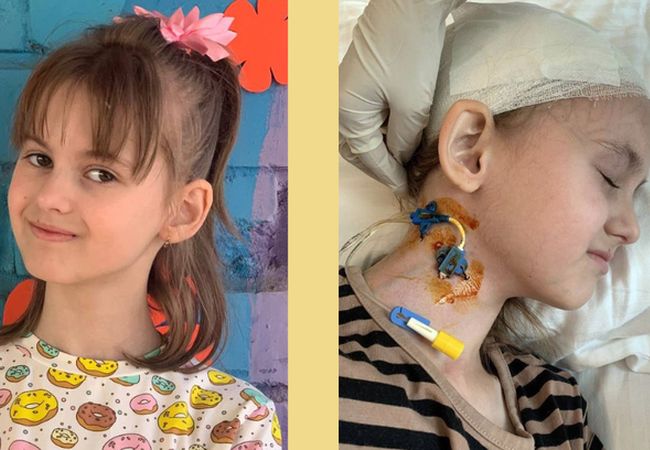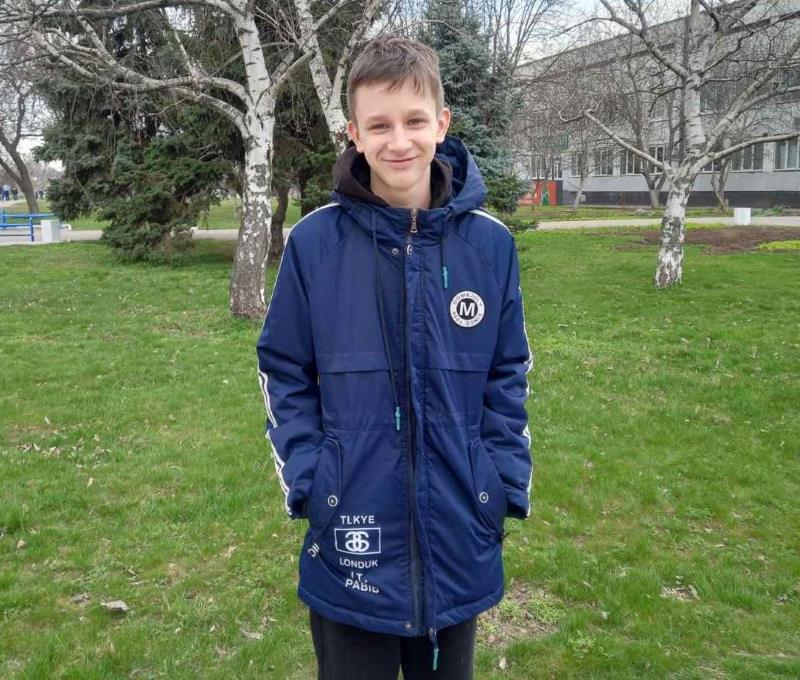Last summer I happened to watch a scene which profoundly saddened me — a barefoot grimy ragamuffin of no more than ten years of age scooped ice cream leftovers with his dirty hand from the bottom of a huge saucepan. The kind-hearted cook from the nearby cafe took the shiny saucepan from the boy when he had finished and promised the boy that he could come the next day — “There will be some more for you.” And then she added heaving a sigh: “Poor thing, life must be pretty hard for you, kids, in your orphanage. Otherwise you would not keep running away from it, would you?” There was indeed a shelter for homeless children situated in the immediate vicinity.
Ice cream banned by a regulation
According to the Ministry of Education and Science of Ukraine, there were over 103 thousand children in Ukraine who were either orphans or children either abandoned by their parents, or whose parents were deprived of parental custody (the figures used in this article have been picked up from different sources and averaged; there are considerable discrepancies in figures given in different sources).
There are over 11 thousand children of preschool age in the orphanages of Ukraine, 2.7 thousand of whom are physically or mentally handicapped. The number of “social orphans” as they are called in Ukrainian statistics, that is the children whose parents have been deprived of the parental custody of their children, is constantly on the rise with the increase of about one thousand such children a year. Mostly they are the parents who cannot take care of their children because of alcohol or drug abuse. The estimate for the end of the year 2002 was 8,000 “social orphans” in Ukraine.
Ukraine which has slid into the category of poor countries is not unique in the respect. Care of orphans, homeless and runaway children is a problem that many LDC (less-developed countries) have to face and deal with — in most cases inadequately. Even pensioners who get miserably small pensions in Ukraine are better protected than orphans who are too small to demand the state pay more attention to them.
According to an official report, submitted by the Department of Social Adaptation of Minors, many orphanages, asylums and internats (that is the boarding schools where orphans live and study — they are a far cry from the ones, in which rich parents educate their offsprings) fail to provide their wards with adequate food which is deficient in such products as meat, fish, dairy products, eggs, fruit and vegetables. The reason — inadequate financing by the state.
Many of the internats are forced to start growing vegetables and fruit in their gardens in order to provide better nourishment for their wards. Besides, there are all kinds of regulations and bans on what is allowed and what is not allowed for children to have. Ice cream is banned, for example, because it does not fit “sanitary norms.” Clothes and bed sheets are in short supply. Instead of 50 to 70 children as is the norm in most western European countries, Ukrainian internat boarding schools are overcrowded with up to 300 children; almost a hundred internats do not have running water; 104 of them have no gyms; over a hundred are in bad repair and twenty are in a badly dilapidated condition.
The number of children who need to be placed in orphanages and internats is growing and hundreds of the destitute parentless children are kept at various medical centres and hospitals which do not have either facilities or trained personnel to take proper care of such children.
Another social blight is homelessness of thousands of children in Ukraine. In the city of Kyiv alone there must be several thousand of homeless children — Serhiy Yatsenko, head of the Homeless Children Department at the Otchy Dim International Charity Organization, says that he personally knows at least a thousand homeless children.
About 70 percent of homeless children are not parentless; about 40 percent of them use drugs; close to 60 percent steal to stay alive; about 80 percent drink alcohol; over 90 percent of them have regular sex, starting from the age of six. Begging in the streets and stealing is a way of life for them, as well as various forms of drug and alcohol addiction; groups of homeless children are structured similarly to criminal hierarchies and have criminal connections. Diseases are rampant and the death rate is very high.
“I have been dealing with the problem of children homelessness for over five years now and can tell you that though these children put on a bold front, they are dead tired of the life they lead and want a decent home to go to. Those who are empowered by the state to do something about the homelessness problem and do very little about it, never forgetting, of course, to provide their own children with everything they need, may soon find themselves — together with the rest of us — living in a society where a considerable number of people — formerly homeless children — are completely asocial, with no education, ready to steal, burglarize and commit other crimes,” says Mr Yatsenko.
Adoption and obstacles
In many more-developed countries (MDC), the problem of homelessness of children is being solved by their being adopted. In the United States, for example, there are two million families who have put themselves on the adoption waiting list, and in some cases they have to wait for years for their turn to adopt children. In other MDCs, like, for example, in Denmark, the state takes a special care of pregnant women to lessen the risk of newly born children being abandoned by their mothers.
The Children Adoption Centre at the Ministry of Education of Ukraine which was set up in 1996, is in charge of the adoption of children in Ukraine. 23,768 adoptions have been registered in the six years that have passed since the foundation of the Centre. Olha Pariyenko, director of the Centre, says that there are no adoption waiting lists in Ukraine. In fact, the number of those who want to adopt children has been decreasing in the past few years — in 1999 there were 2,333 families who wanted to adopt children, and in 2001 there were only 1,999. These statistic figures reflect an appalling situation — there are about one million families who for physiological reasons cannot have children and yet they do not come forward as potential adoptive parents. In most cases, adoptions target children under one year of age whose parents are known and who have few health problems. Girls are much more likely to be adopted — it is a phenomenon that needs a further study.
Foreign adopters are much less strict or rigid in their adoption requirements. They are prepared to adopt handicapped children and sick children, children who are in an urgent need of an operation, children who are over 8 years of age (the chances of such children for being adopted by Ukrainian families are close to nil; in fact, all the children with handicaps are adopted by foreigners). The Children Adoption Centre has registered adoptions by adopters from 32 countries of the world, mostly from the United States, Canada, Spain, Italy, Belgium, France and Germany. Several children were adopted by families from Russia and Uzbekistan. In 1999, foreign adopters adopted 1,139 children; in 2000 — 2,193, and in 2001— 2,672.
At the end of December 2002 there were over 1,300 foreign families waiting for their turn to adopt a child. For most it is a harrowing experience — you have to visit Ukraine several times not only to see the children offered for adoption but to go through various bureaucratic procedures, and in the end it is the court of law that decides whether this particular family shall be given the right to adopt this particular child — and the much bureaucratized courts in Ukraine are never in a hurry to take a decision. The adoption procedures may last from six to twelve months. Frequent visits to or staying in Ukraine are a considerable and additional expense that not all the families are prepared to incur.
All of this procrastination is probably the direct result of the state adoption policies. There are more than enough Ukrainian children to be adopted but the Centre is reluctant to advertise abroad the availability of children for adoption. One reason — the Centre’s resources are limited and it cannot process more requests than it actually does. Another reason — in the words of Olha Pariyenko, the Centre’s director: “Our policy is to have Ukrainian children living in their native country and we encourage our Ukrainian families to adopt children rather than have them adopted by foreigners.”
There is some encouragement given but mostly verbal. The results are minimal. In 2001, an Adopt a Child campaign was launched and those who would agree to adopt children were promised some financial backing — from 250 to 300 hryvnyas a month (about 50 US dollars) taken from the local budgets but there was very little response — “Either the people have become too callous or there was too little money promised with no firm guarantees it would be paid,” wrote a newspaper in the city of Donetsk.
Three basic reasons are generally given to explain the Ukrainian state’s great reluctance to allow more adoptions by foreigners: it is wrong to have “our” Ukrainian children taken out of Ukraine; secondly, it is not known what will happen with adopted children afterwards — what if they are used for some sinister purposes?; and thirdly — if there are too many foreigners adopting Ukrainian children, there will not be enough children left for adoption by “our” Ukrainian families.
They are all very wrong reasons with nothing to substantiate them.
“Our” is an absolutely wrong adjective to use — orphaned children are not the state-owned property and they do not have any “responsibilities” before the state. It is the state that has to provide a more or less decent living conditions for them — and if it cannot why not let others do it? It is the well being of the children that should be the primary — in fact the only — consideration. It is the fate of thousands upon thousands of children remaining to lead miserable lives in internats and orphanages that should be of a concern for the state — not the wrongly interpreted considerations of “prestige” and of “what people would say.”
Secondly, “what happens with the child after it is adopted by a foreign family” is closely monitored by several state bodies, the Ministry of Foreign Affairs included — much more closely in fact than the life of the children adopted by Ukrainian families.
Thirdly, the number of children who can be adopted is many times over the number of requests for adoption coming from the Ukrainian families; besides, most of the children who are adopted by foreigners would have practically no chance of being adopted by Ukrainian families because of their age, ancestry and health. Permissions for adoption by foreigners are given only after no Ukrainian adopters have been found within a specified period of time.
There is a definite and urgent need to have the policies which are currently pursued by the state in adoption of children reviewed and changed — for the benefit of the children.
One look at the photographs of their adopted children the adoptive parents send to the Children Adoption Centre should convince anyone better than any amount of words that these children are well taken care of — they are healthy, well nourished and happy.
Or shall we leave our orphans and homeless children to the mercies of the streets and criminals and hope for the kindness of goodhearted cooks at the roadside cafes to treat them to the leftovers of ice cream?



